The 400g qsfp112 optical transceiver module is a game changer in the world of networking and data transmission. With increased demand for faster data transfer rates, this device comes with higher bandwidths, lower latencies, and better power efficiency. This article will explore the technical specs, use cases, and performance benefits of the 400G QSFP112 module. Understanding how it works can help IT professionals or network engineers appreciate its contribution towards modern DCs and telecoms infrastructure. The information shared in this post is designed to give you an all-round understanding of these latest transceivers that will enable you to choose whether to upgrade your current setup or plan for tomorrow’s growth.
What is a QSFP112 Transceiver?
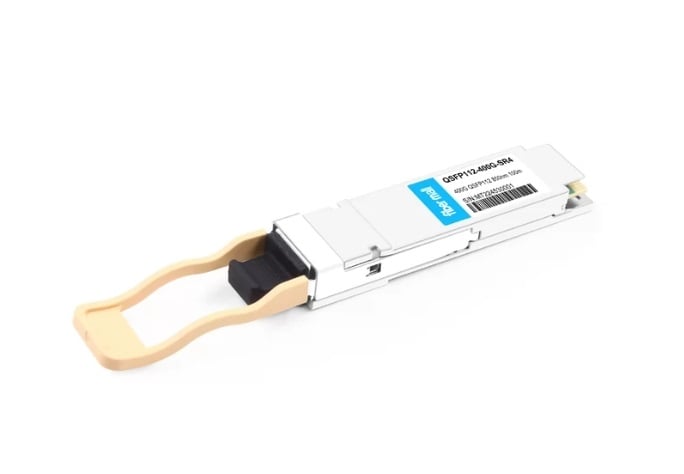
How does a QSFP112 work?
To convert electric signals to optical signals for data transmission through fiber optic cables, the QSFP112 transceiver applies light-emitting technology. A highly advanced laser modulates the data onto a light signal. This light signal is transmitted over the optical fiber, thereby increasing data transfer speed considerably and minimizing signal attenuation over long distances. On the receiving side, it converts them back into electrical signals for processing. Additionally, it has built-in error correction methods that are very complex in nature so as to guarantee the integrity of transmitted information and support integration with different network protocols seamlessly, which makes it an indispensable part of high-performance networking applications.
What are the features of QSFP112 Transceivers?
QSFP112 Transceivers have several attributes that make them work better in high-speed networking:
- High Data Rate: These can send out data as fast as 400 Gbps, meeting the demands of current data centers and telecommunication networks.
- Low Power Consumption: They are designed with power saving in mind, so they use less energy than previous models, thus reducing operational costs and dissipating less heat.
- Extended Reach: They can transmit information over long distances, which makes them suitable for intra- and inter-data center applications.
- Compatibility: This can be easily integrated into any network infrastructure already in place without having to change or buy new equipment because it works with different protocols. According to this specification, she is expected to become a universal transceiver, which will enable wider adoption in future implementations.
- Enhanced Signal Integrity: More advanced methods for detecting and correcting errors have been implemented along with reduced latency, resulting in stronger signal transmission reliability.
- Compact Design: Being small means more ports can be fitted onto one device, maximizing the utilization of space within networking gear cabinets, where the physical area is usually limited.
These features collectively position QSFP112 as an indispensable element necessary for realizing high-performance, scalable networking solutions.
What are the applications of QSFP112 Transceiver Modules?
QSFP112 transceiver modules find themselves in many high-speed network settings because they are adaptable and robust. Here are some examples:
- Data Centers: The modules in these centers allow large amounts of data to be transferred quickly while maintaining low latency between them, a capability that supports the growing need for storing and processing information.
- Telecommunications: In telecommunications networks, QSFP112 transceivers allow data to be transmitted over long distances, ensuring efficient communication even across wide areas.
- High-Performance Computing (HPC): These environments depend heavily on QSF112 transceivers, which enable fast exchanges of information as well as continuous high throughput necessary for scientific computing at an advanced level.
These instances emphasize how important these devices have become to our modern networking infrastructure, where they ensure flawless connections with high speeds throughout different sectors using standard equipment.
What are the Specifications of 400g QSFP112?
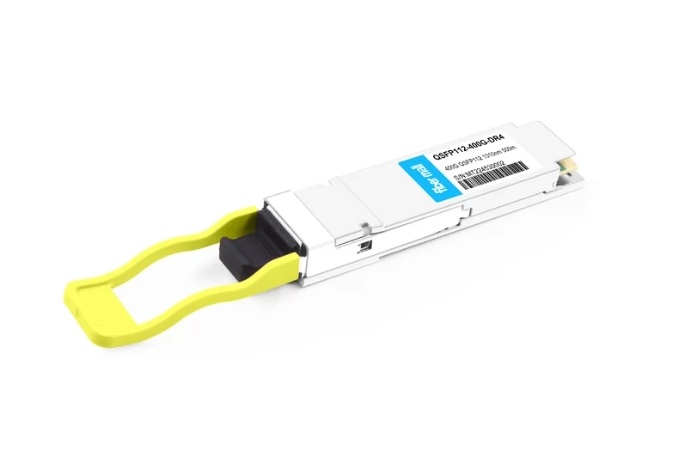
Key Specifications of 400g QSFP112 Modules
The 400g QSFP112 modules have technical specifications to fit high-speed networking environments. Some of these specs include:
- Data Rate: This device can support up to 400 Gbps, which makes it ideal for large-scale data transfer.
- Form Factor: These devices are QSFP-DD (Quad Small Form Factor Pluggable Double Density) compliant, which means they will work with most of the hardware types available today.
- Wavelengths: It has different wavelength options, typically ranging from 850 nm to 1550 nm, making it flexible enough for use over varying distances.
- Reach: They also come in different reach capabilities, such as short-reach (SR), long-reach (LR), and extended-reach (ER) versions, so you can choose what best suits your needs when setting up a network system.
- Power Consumption: With an average power consumption of just about 10-15W per module, less energy is used, leading to more cost-efficient operations.
- Temperature Range: It works reliably at temperatures between 0°C and 70°C, which allows it to run smoothly under different environmental conditions, such as extreme cold or heat, without losing stability.
- Connector Type: Two connector types can be used with the QSFP112; they are MPO or LC connectors, depending on the model/application requirement.
These figures explain why the 400g QSFP112 module is considered necessary for any high-speed network, as it offers scalability options while still being flexible and robust in performance.
Compatibility with other fiber cables and optics
The 400g QSFP112 modules support various fiber optic cables and components to ensure they can be easily integrated into existing networking infrastructures. They can work with single-mode fiber (SMF) or multimode fiber (MMF) cables in different deployment scenarios. The modules provide adequate support for distances up to 10 kilometers or more on SMF at 1310 nm wavelength using LC or MPO connectors. On MMF, compatibility is usually limited to short distances of up to 100 meters with wavelengths around 850nm through MPO connections. Moreover, the interoperability of these modules with various optical technologies, such as different types of DWDM systems and optical amplifiers, is a testament to their versatility in modern and legacy systems. Therefore, any network could benefit greatly from this wide-ranging compatibility offered by the 400g QSFP112 module, which will help increase capacity as well as performance across different networks.
Understanding PAM4 and dual CDR Technology
PAM4 (Pulse Amplitude Modulation 4-Level) is an advanced modulation technique to increase the data rate of optical and electrical communication systems. Unlike NRZ (Non-Return-to-Zero), where two levels, 0 and 1, are used to encode data, four distinct levels are used by PAM4 for this purpose. What this does is that it essentially doubles the amount of information transmitted without requiring more bandwidth. However, such a system becomes susceptible to noise and signal degradation due to its increased number of levels, meaning that error correction methods and sophisticated signal processing algorithms have to be employed.
On the other hand, dual CDR or Clock Data Recovery technology is used in high-speed communication systems mainly to maintain signal integrity and synchronization. CDR modules extract Timing information from the data signal, which then regenerates a clean clock signal. Involving two modules allows dual CDRs to recover clocks independently at both ends, thus resulting in a better performance where clocking between the transmitting side and receiving side may not be perfectly aligned. Jitter is greatly reduced by this dual mechanism while also improving the reliability of data transmission as a whole. Therefore, it cannot be overlooked, especially for high-speed networks.
Both PAM4 and Dual CDR technologies work towards higher data rate achievement and preservation of signal quality within next-generation networking modules like 400g QSFP112. Such robustness guarantees future scalability alongside performance in view of fast-growing communication needs, with large amounts of information quickly transferred over long distances through various media types, such as fiber optic cables, etc.
How do QSFP112 Transceivers compare to other Transceiver types?
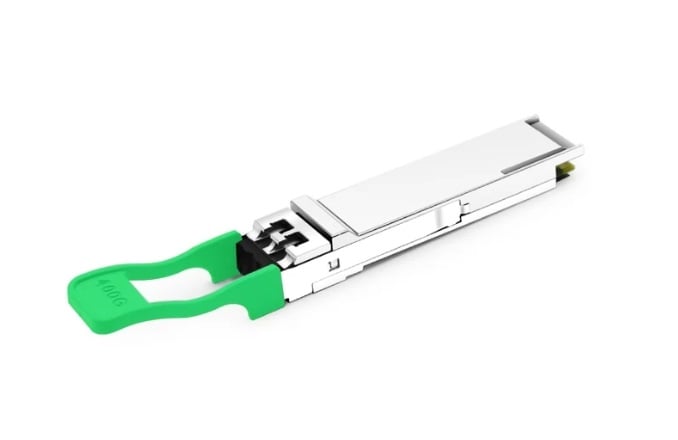
Comparing QSFP112 and QSFP-DD
The main differences between QSFP112 and QSFP-DD transceivers are the data rate capabilities, form factor, and application suitability. Using PAM4 and other advanced modulation methods, QSFP112 transceivers can support up to 400 Gbps of data. This makes them a good choice for high-speed data centers that need to improve performance within their existing infrastructure because they are compatible with previous versions.
On the flip side, QSFP-DD (Quad Small Form-factor Pluggable Double Density) transceivers achieve better scalability by adopting an eight-lane design that supports 800 Gbps (100 Gbps per lane). This higher density allows for higher port counts, thereby providing larger aggregate bandwidths. These features make them perfect for use in next-generation data center architectures and aggregation layers where space and power efficiency are key considerations.
To sum it up, although both transceivers aim to improve performance and transfer rates, wireless and wireless optical network innovations have brought about a revolution. For instance, while QSFP112 is more concerned with maximizing current infrastructure efficiencies that allow for 400 Gbps, QSFP-DD looks beyond this towards setting up networks capable of handling double the current rate paired with smaller size requirements necessary for future readiness.
What are the differences between 400g QSFP112 and QSFP28?
The main differences between 400G QSFP112 and QSFP28 transceivers are the data rate capabilities, modulation techniques, and application use cases. 400G QSFP112 supports data rates of up to 400 Gbps by using PAM4 and other advanced modulation technologies. These transceivers were created for quick centers that need more performance without breaking compatibility with existing QSFP interfaces.
On the contrary, NRZ modulation enables QSFP28 to support only up to 100 Gbps. Usually found in 100G Ethernet networks, these transceivers serve data centers that require reliable and cost-effective ways of transferring smaller amounts of aggregated bandwidth compared to what is offered by Quartersized Form Factor Pluggable One Twelve. However, there could be some shifting in applications due to new advancements within active copper.
In conclusion, while per-lane improvements keep pushing the limits of what can be achieved with modern technology, it seems like 400G QSFP112 is meant for next-gen apps demanding super high speeds combined with advanced modulations. On the other hand, we’re good using qsfp28 where compatibility matters most, such as current infrastructures designed around one hundred gigabit ethernet standardization or cost-effectiveness being key points.
How does QSFP112 fit into the next generation of the QSFP family?
In the QSFP family of modules, QSFP112 is a major step forward because it meets the industry’s growing need for faster speeds and better efficiency. The new generation of QSFP transceivers supports 400Gbps with PAM4 modulation technology, which is four times larger than its previous version (QSFP28). This means that this module can be used as part of ultra-high-speed data center interconnects and next-generation network infrastructures. QSFP interfaces were designed to be backward compatible with other types already in operation so that they could be upgraded without making any significant changes. In addition, the design of this device follows emerging trends like those found in cloud-based computing systems, artificial intelligence research, or even big data analytics applications where massive amounts of information need processing quickly over long distances, thus making it an essential component for future-proof networks.
How do QSFP112 Modules enhance Data Center Cabling?
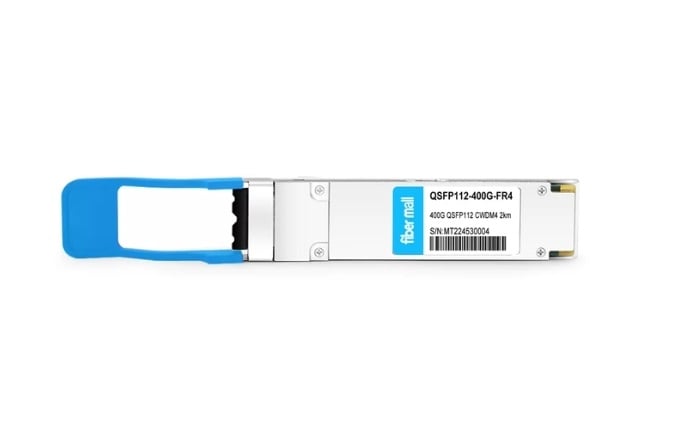
Benefits of using QSFP112 in Data Centers
Using QSFP112 modules in data centers has several advantages that improve performance and efficiency as a whole. Data handling capacity is increased by the high data transfer rates of 400 Gbps, thus making these modules suitable for cloud computing, AI, and large-scale data processing, among other high-demand applications. Secondly, power efficiency is enhanced by QSFP112 modules which help maintain operational costs and manage heat dissipation within data centers. Finally, these modules ensure backward compatibility with existing QSFP interfaces, hence enabling seamless and cost-effective upgrading without requiring a complete infrastructure overhaul. Thus, all these benefits establish QSFP112 as an essential technology for the modernization and future-proofing of data center activities collectively.
How to optimize Data Center performance with 400g QSFP112 Modules
A 400G QSFP112 module can be used to optimize data center performance through strategic ways of exploiting its capabilities. Do a comprehensive network assessment at first so as to detect any possible bottlenecks that may exist while ensuring that the infrastructure supports high-speed data transfers. Enhance cabling infrastructure optimization by using high-quality, low-loss cables that are specifically designed for 400G connections because this guarantees the least signal attenuation and maximum performance achievement. Moreover, you should deploy software-defined networking (SDN) in order to allocate resources dynamically and manage traffic efficiently, thus enabling more flexible and scalable operations.
It is also possible to integrate QSFP112 modules with compatible switches, which should have advanced functionalities like load balancing or redundancy awareness in addition to being high-performance standards for improved reliability in preventing downtimes during the continuous flow of data across networks. Finally, an organization must make sure the environment they have set up for running a data center is managed properly, including efficient cooling systems and power management capability, since these will be needed to cater to power efficiency demands as well as thermal requirements associated with 400G QSFP112 modules. Through such actions, wireless and 5g optical networks, particularly among other modern network applications, can achieve demand levels by centers dealing with large volumes at high speeds using 400G QSFP112 modules.
Migration paths using QSFP112 for future-proof data center cabling
When it comes to ensuring future-proof data center cabling with QSFP112 modules, various migration paths need to be considered, such as 400g QSFP112 to QSFP112 active. First, one should think of adopting modular infrastructure because it allows for scalability as well as easy upgrades. This enables data centers to move smoothly from lower speeds up to 400G in line with growing demand. This method reduces interruption while maximizing the usage of existing investments in cabling systems.
Secondly, people can use multi-mode fiber (MMF) since it offers cost-effective solutions for short-reach applications while still transitioning into single-mode fiber (SMF), which guarantees higher performance and more extended reach capacity, thereby accommodating long-distance data transmission requirements. Additionally, investment in high-density patch panels together with structured cabling systems improves efficiency and makes it easier to manage cables, thus paving the way for denser deployments without compromising performance.
Last but not least important is having a well-defined testing and validation process, which ensures that the cable infrastructure consistently meets the tight standards associated with 400G operations. This includes regular checks on how it performs coupled with the following industry benchmarks towards achieving the best network reliability both now and in the future when scalability becomes inevitable. All these migration paths are aimed at enabling centers to adjust themselves according to changing technology trends without interrupting their normal high-powered activities.
What are the Compatibility and usage guidelines for QSFP112?
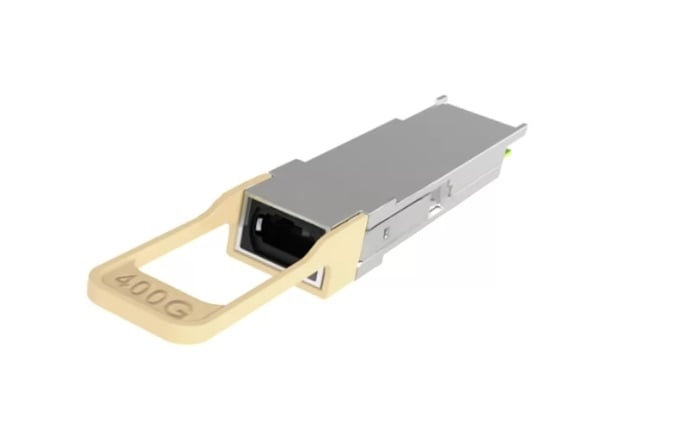
Devices and switches that support QSFP112 Transceivers
A lot of devices and switches can work with QSFP112 transceivers, enabling fast data transfer rates and easy integration into modern data centers. According to the latest information from trusted sources, 800g and wireless g optical networks are driving innovation.
- Cisco Nexus 9000 Series: These switches were created with high-performance requirements in mind; they can support QSFP112 modules, which makes them very powerful for 400G operations.
- Arista 7500R3 Series: These switches have been recognized for being scalable and efficient, so it was not a surprise that they also support QSFP112 transceivers, which are perfect for low-latency, high-bandwidth environments.
- Juniper Networks QFX Series: QFX5220 switch, among others, offers compatibility with QSFP112 modules, thereby allowing for dense transmission of 400G data and giving a chance to configure networks flexibly.
Integration of advanced switching solutions with QSFP112 transceivers ensures higher performance, scalability, and reliability necessary to meet growing network needs within the data centers.
Installation tips for QSFP112 Modules
- Ensure Proper Handling: Don’t touch the gold connectors directly. Try to avoid contaminating or scratching them. When handling this module, wear an antistatic wrist strap for protection against electrostatic discharge (ESD).
- Verify Firmware Compatibility: Ensure your switches and devices are running on the latest firmware versions that support QSFP112 transceivers before installing them. Check with the device manufacturer for specific firmware requirements.
- Correct Insertion and Removal: Gently slide the QSFP112 module into its slot until it clicks into place. To remove it, pull straight out after releasing the latch to avoid bending any pins.
- Clean Optical Interfaces: Clean both optical interfaces of the QSFP112 module and connect fiber optic cables using lint-free swabs dipped in isopropyl alcohol. Clean, dry connectors can reduce signal loss, which might lead to transmission errors.
- Label and Organize: Always label each installed QSFP112 module along with its corresponding fiber optic cable for easy identification within a data center. Troubleshooting becomes easier when there is proper documentation and cable management during upgrades too.
- Monitor and Test: After installing this hardware, monitor its performance via network management system software. Test optical link quality periodically while ensuring that modules work correctly as per specified limits.
Observe these installation tips so as to achieve better results with your network infrastructure based on QSFP112 modules.
Maintaining and troubleshooting QSFP112 Transceivers
Regular Upkeep Procedures
- Standard Dusting for live copper wires is a must.: From time to time, use a lint-free swab soaked in isopropyl alcohol to clean the transceiver and fiber optic connectors. This will help you avoid signal degradation caused by dust or dirt.
- Firmware Optimization: Keep all devices and transceivers up-to-date with the latest firmware versions so they remain compatible and perform optimally. Always check with the manufacturer of your device if there are any new firmware releases.
- Monitoring Temperatures is Key for Maintaining 400g QSFP112 – QSFP112 Active Connections.: Monitor the operating temperature of your transceivers, ensuring that they work within the specified range; a failure which may lead to overheating and consequent breakdowns.
Troubleshooting Common Issues
- Link Failure: In case of link failure, confirm whether the QSFP112 module sits well in its slot and whether the connectors are clean. Then, check the configuration settings, making sure that the firmware is current.
- Signal Loss: Inspect fiber optic cables for signs of damage. Use an optical power meter to measure signal strength, which should fall within acceptable levels. Otherwise, replace the affected cables, restoring integrity.
- Performance Degradation: Employ network management tools when monitoring performance metrics related to this type of transceiver. Look out for any transmission abnormalities or errors, such as increased bit error rates, and fix them immediately.
Following these maintenance practices and troubleshooting techniques guarantees continuous service provision by QSFP112 transceivers. Regular checks and prompt actions can save you from significant network failures by preventing them from escalating out of control.
What are the matching products for QSFP112 Transceivers?
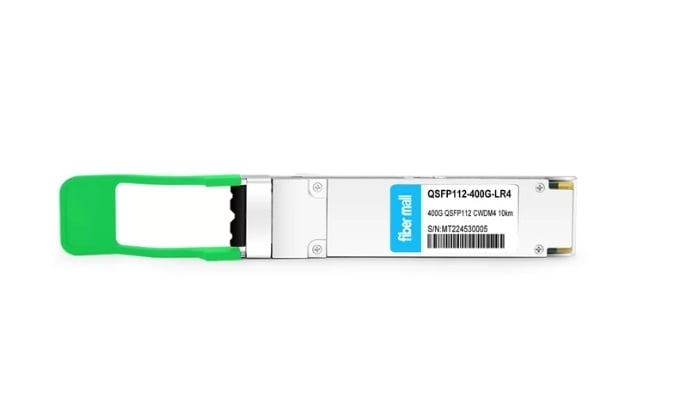
Direct Attach Cables (DAC) compatible with QSFP112
When using QSFP112 transceivers, Direct Attach Cables (DAC) are important in guaranteeing high performance and seamless connectivity in your network infrastructure. The subsequent DAC options can be used with QSFP112 transceivers:
- Passive DACs: These cables are best suited for short-distance applications that usually range up to 5 meters. They do not require additional power sources and work well in high-density data centers or rack-to-rack connections, particularly when FR4 transceivers are being used.
- Active DACs: Active DACs, on the other hand, use built-in electronics to improve signal quality as well as transmission reliability, especially where extended reach is required, ranging from 15m – 100Gbps data rate environments.
- Breakout DACs: Breakout DACs are designed specifically for high port-density networks. They split a single QSFP112 port into multiple SFP+ or SFP28 ports, enabling scalability and flexibility in such environments.
By utilizing the right kind of DACs with your QSFP112 transceivers, you will ensure that your network performs optimally while providing enough room for growth now and later during migration to 800g systems.
Active Optical Cables (AOC) for QSFP112 Modules
Active Optical Cables (AOC) for QSFP112 modules are crucial for long-distance, high-speed data transfer. Here are the most compatible AOC options with QSFP112 transceivers:
- QSFP112 AOC 100G: This variant is a strong solution for very fast data sending across large data centers with support for connections of up to 100 meters. It is useful in supercomputing, where bandwidths and distances both matter.
- QSFP112 to QSFP112 AOC: This cable is made for direct point-to-point connections; it ensures that information travels without interruption and at minimal delays due to its low latency nature, thus suiting networks requiring efficient long-range communication.
- QSFP112 Breakout AOC: The cable splits one high-speed port into multiple lower-speed ports like SFP+ or SFP28, which leads to more versatile connectivity options, thus ideal for environments that need such capability while supporting larger network scale.
Using these AOCs with QSFP112 modules greatly improves network infrastructure by establishing reliable, high-capacity data links, which are necessary for modern complex network architectures and data centers.
Breakout Cables suitable for QSFP112 Transceivers
Breakout cables are compatible with QSFP112 transceivers; they allow different network setups by changing a single high-speed connection into many lower-speed connections. Below are some of the breakout cable options:
- QSFP112 to 4x SFP28 Breakout Cable: This wire splits one 100G QSFP112 port to four 25G SFP28 ports, enabling migration to higher bandwidths effectively without alienating compatibility with existing 25G infrastructures. This makes it suitable for data centers that need more network capacity but do not want to change the whole system.
- QSFP112 to 4x SFP+ Breakout Cable: This wire is designed for environments shifting from 10G to 100 G. It converts a 100G QSFP112 link into four 10G SFP+ ports, supporting legacy hardware while providing an affordable way of enhancing network speeds.
- QSFP112 to 2x QSFP56 Breakout Cable: This choice allows dividing a single 200G QSFP112 connection into two separate ones, each with one hundred gigabit per second capacity, through two special types of connector known as Enhanced Quad Small Form-factor Pluggable (EQSFFP). EQSFFP offers better flexibility and higher data rates for advanced data center designs; hence, it works well with high-performance computing and scalable network architectures.
By adding these breakout cables to your infrastructure, you will maximize the performance and scalability of your networks, ensure that current resources are utilized efficiently, and prepare for future expansion.
Reference Sources
Frequently Asked Questions (FAQs)
Q: What is a 400g QSFP112 Optical Transceiver Module?
A: The 400g QSFP112 Optical Transceiver Module is a network connector that operates at high speeds and can support Ethernet up to 400 gigabits per second (Gbps). It is deployed in data centers and other high-performance computing networks to enable fast, reliable information transmission over copper or fiber optic cables like active copper.
Q: How does a 400g QSFP112 Transceiver compare to a QSFP-DD800 module?
A: A single 400g QSFP112 Transceiver can handle up to 400 Gbps, while the maximum capacity of QSFP-DD800 modules is twice as much. Moreover, the latter features higher bandwidth capabilities and may use different technologies to support increased data rates.
Q: Can I use 400g QSFP112 transceivers with existing fiber optic networks?
A: Yes. The design of the 400g QSFP112 transceivers ensures their backward compatibility with current fiber optic networks, thus enabling them to be integrated seamlessly into such infrastructures while preparing for more significant bandwidth needs.
Q: What are the typical applications for 400g QSFP112 transceivers?
A: These transceivers find wide applications in cloud computing environments, data centers, wireless and optical networks based on 5G technology, and other high-speed networking contexts. They are compatible with different function modules like InfiniBand, OTN, or Ethernet at up to 400 Gb/s rates.
Q: What types of cables can be connected to 400g QSFP112 Transceivers?
A: DAC breakout cables, AOC breakout cables, fiber patch cords, and high-density cables can all be connected to these transceivers, which allow both single-mode and multi-mode fiber optic connections.
Q: What is the reach of 400g QSFP112 Transceivers?
A: The range of a 400g QSFP112 transceiver is indefinite. However, it generally can go up to 2 km on singlemode fiber (SMF) and different distances on multimode fiber (MMF), depending on the model used.
Q: Do 400g QSFP112 Transceivers have any special features for signal integrity and thermal management?
A: These transceivers have many advanced capabilities to manage heat and maintain signal quality. They also undergo extensive industrial tests to ensure they can work under different conditions and environments as required.
Q: Are there any specific MSA codes that 400g QSFP112 transceivers comply with?
A: Yes, usually 400g QSFP112 transceivers comply with Multi-Source Agreements, including QSFP-DD for interoperability with other compliant devices, among others, and CMIS, which stands for management interface specification.
Q: How can I ensure compatibility with my existing network devices when using 400g QSFP112 transceivers?
A: To guarantee compatibility with current network devices, you should check if they are third-party compatible and look at the manufacturer’s specifications for backward compatibility. Additionally, partial testing demonstrations might be conducted before full deployment.
Related Products:
-
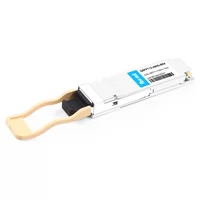 QSFP112-400G-SR4 400G QSFP112 SR4 PAM4 850nm 100m MTP/MPO-12 OM3 FEC Optical Transceiver Module
$650.00
QSFP112-400G-SR4 400G QSFP112 SR4 PAM4 850nm 100m MTP/MPO-12 OM3 FEC Optical Transceiver Module
$650.00
-
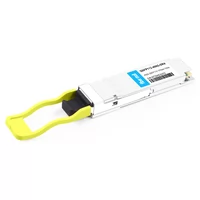 QSFP112-400G-DR4 400G QSFP112 DR4 PAM4 1310nm 500m MTP/MPO-12 with KP4 FEC Optical Transceiver Module
$1350.00
QSFP112-400G-DR4 400G QSFP112 DR4 PAM4 1310nm 500m MTP/MPO-12 with KP4 FEC Optical Transceiver Module
$1350.00
-
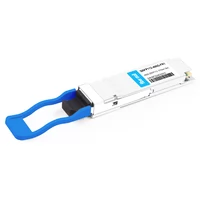 QSFP112-400G-FR1 4x100G QSFP112 FR1 PAM4 1310nm 2km MTP/MPO-12 SMF FEC Optical Transceiver Module
$1300.00
QSFP112-400G-FR1 4x100G QSFP112 FR1 PAM4 1310nm 2km MTP/MPO-12 SMF FEC Optical Transceiver Module
$1300.00
-
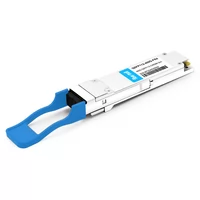 QSFP112-400G-FR4 400G QSFP112 FR4 PAM4 CWDM 2km Duplex LC SMF FEC Optical Transceiver Module
$1760.00
QSFP112-400G-FR4 400G QSFP112 FR4 PAM4 CWDM 2km Duplex LC SMF FEC Optical Transceiver Module
$1760.00
-
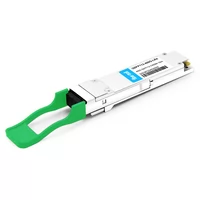 QSFP112-400G-LR4 400G QSFP112 LR4 PAM4 CWDM 10km Duplex LC SMF FEC Optical Transceiver Module
$2160.00
QSFP112-400G-LR4 400G QSFP112 LR4 PAM4 CWDM 10km Duplex LC SMF FEC Optical Transceiver Module
$2160.00
-
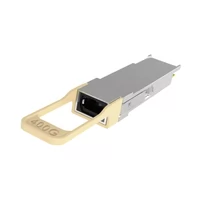 LQSFP112-400G-SR4 400G LPO QSFP112 SR4 PAM4 850nm 50m MTP/MPO-12 OM3 FEC Optical Transceiver Module
$890.00
LQSFP112-400G-SR4 400G LPO QSFP112 SR4 PAM4 850nm 50m MTP/MPO-12 OM3 FEC Optical Transceiver Module
$890.00
-
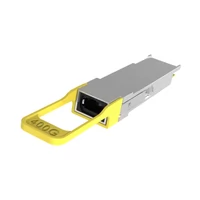 LQSFP112-400G-DR4 400G LPO QSFP112 DR4 PAM4 1310nm 500m MTP/MPO-12 with KP4 FEC Optical Transceiver Module
$1215.00
LQSFP112-400G-DR4 400G LPO QSFP112 DR4 PAM4 1310nm 500m MTP/MPO-12 with KP4 FEC Optical Transceiver Module
$1215.00
-
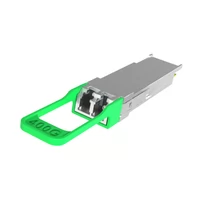 LQSFP112-400G-FR4 400G LPO QSFP112 FR4 PAM4 CWDM 2km Duplex LC SMF FEC Optical Transceiver Module
$1585.00
LQSFP112-400G-FR4 400G LPO QSFP112 FR4 PAM4 CWDM 2km Duplex LC SMF FEC Optical Transceiver Module
$1585.00
Related posts:
- Next-Gen Data Transfer: SFP112/QSFP112/QSFP-DD800/OSFP 800G DAC
- Everything You Need to Know About CWDM Transceivers: From SFP Modules to 80km Optical Fiber Connectivity
- The Ultimate Guide to SGMII SFP Transceivers: Everything You Need to Know About Optical Transceivers and Ethernet Ports
- Research and Design of 800G OSFP 2xDR4 Optical Transceiver Module
